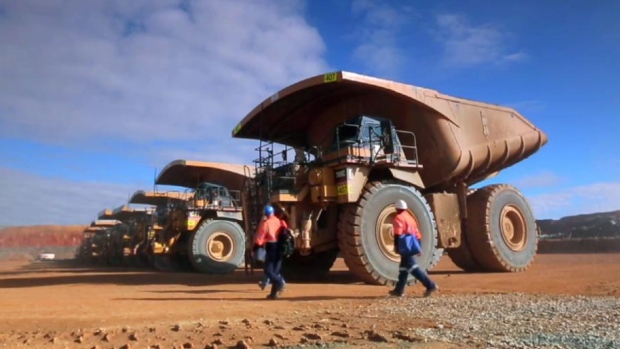Feb 15, 2017
Barrick Gold profit climbs as miner lifts its dividend
, Reuters

Barrick Gold Corp reported better-than-expected profits and ambitious debt reduction plans on Wednesday, saying its balance sheet is now healthy enough to boost dividends and exploration spending.
The Toronto-based miner, which is hiking its dividend to three cents US from two cents US a share, said it will expand its hunt for new gold beyond trusted core districts and projects, to so-called 'greenfield' areas.
Such uncharted territory represents a higher risk of failure, but bigger potential rewards for sizeable discoveries. Some 80 percent of the $185-$225 million exploration budget is earmarked for the Americas, with much of the remainder for its African unit, Acacia.
In 2016, it budgeted US$125-US$155 million for exploration.
Barrick, the world's biggest gold miner, reported an adjusted profit of 22 cents US a share, ahead of the consensus analyst estimate of 19 cents US per share, and up from eight cents US a share in the same period last year.
Revenue increased to US$2.32 billion from US$2.24 billion.
Barrick, which has been selling non-core assets to help cut debt, plans to further reduce its debt by US$2.9 billion by the end of 2018, decreasing its debt load to US$5 billion from US$7.9 billion currently.
Cash flow from operations, non-core asset sales and new joint ventures and partnerships will finance the effort, which reduced debt by US$2 billion in 2016.
Barrick estimates its 2017 all-in sustaining costs, a measure of the effective day-to-day cost of producing gold, at US$720-US$770 an ounce, below an earlier estimate of US$740-US$775.
The cost of fourth-quarter production was US$732 an ounce, down from US$848 in the same period last year. Barrick has been pushing to improve efficiency and incorporate more technology into its operations.
Barrick expects to produce 5.6-5.9 million ounces of gold in 2017, up from 5.52 million in 2016, and above its earlier target of 5-5.5 million ounces.
Production in 2018 is expected to drop to 4.8-5.3 million ounces, and to 4.6-5.1 million ounces in 2019.
Fourth-quarter gold production declined to 1.52 million ounces from 1.62 million last year. Full-year copper output was 415 million pounds, with fourth-quarter production of 101 million pounds.
Proven and probable gold reserve estimates fell 6.5 per cent, to 85.9 million ounces at the end of 2016, from 91.9 million ounces in 2015. Last year, some 1.9 million ounces was divested and 6.8 million ounces depleted through mining, Barrick said.



